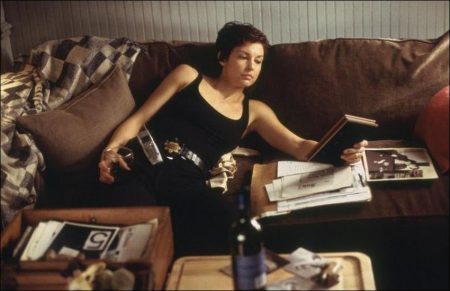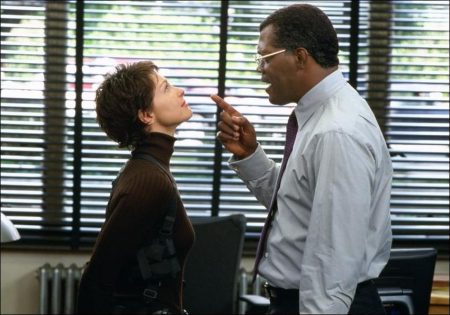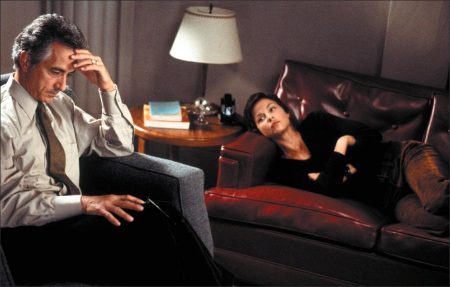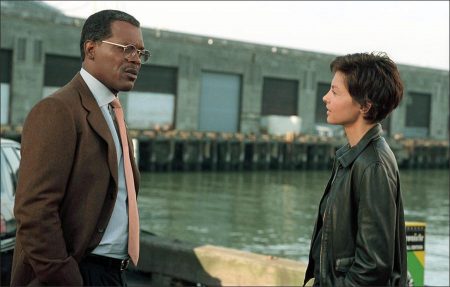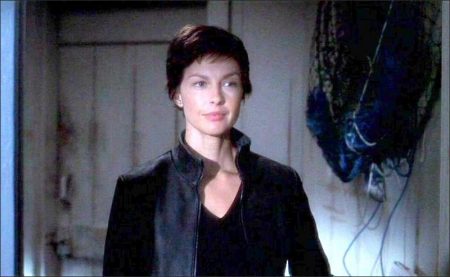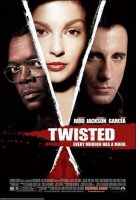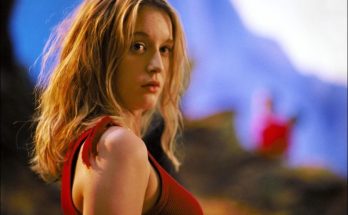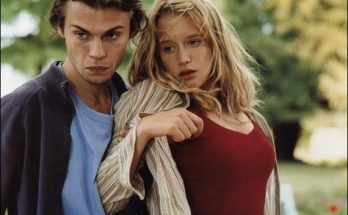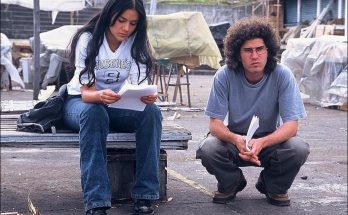Twisted Movie Trailer. “I’ve admired Phil’s work for a long time, and after seeing him in action, I can understand why his films are of such quality,” observes the Oscarâ and Golden Globe-nominated actor. “I think he took a great story and elevated it to a psychological thriller with an ending they’ll never see coming.”
Known for his ability to adapt complicated plots and make them accessible to a broad audience, Philip Kaufman, who directed “The Unbearable Lightness of Being” and received an Oscarâ nomination for his screenplay adaptation of Milan Kundera’s best-selling novel, brought his directorial skills to the set of “Twisted.”
“This film has a sexually-charged complexity about it that makes it a very unique mystery,” observes Kaufman, referring to both the sophisticated plot and sensuality in the film. “There are no stereotypes in terms of men and women, no clear paths leading to suspects and neither the audience nor the main character is sure who the killer is all the way up until the final few sequences.”
Equally unaware of the murderer’s identity as Jessica is, her partner Mike Delmarco, portrayed by Andy Garcia, is not clear of suspicion himself. Nominated for both an Oscarâ and a Golden Globe for his role in “The Godfather: Part III,” Garcia relished the opportunity to work with Kaufman because of the rare quality the director’s films have in their subject matter and character development.
“When my character is introduced to Jessica, you can instantly feel the strong physical connection and the respect these two have for each another,” says Garcia. “You know that they’re going to cover each other’s back. Even when the evidence starts leaning toward Jessica’s guilt, it’s Mike who never sways from his belief in her innocence. She’s his partner and he stands by her.
Director Kaufman feels that onscreen chemistry between Judd and Garcia was essential, and that the two actors definitely had it in spades. “I was really pleased with the intensity of these two actors on camera, projecting tension, loyalty and even a heated physical attraction toward one another without compromising their efforts to find the killer.”
Academy Award -winning producer Arnold Kopelson, and producer Anne Kopelson are delighted with all of their highly talented cast and feel each of the actors brings amazing depth to his or her role.
“Anne and I were thrilled that such topnotch actors were attracted to this film, and it has been a great experience working with all of them,” says Arnold Kopelson. “Not only were they great actors, but they were also extremely professional during the entire process.”
Kopelson adds that Ashley Judd and Andy Garcia have a wonderful chemistry that really comes across on the screen, and that while Judd’s character often calls for her to show her sexual prowess and be as sexually liberated as her male counterparts, the actress plays the role without holding back.
“Delmarco is very protective of Jessica ‘ maybe even a little chauvinistic ‘ but she’s strong and stands up to all the guys, including him,” says Kopelson. “When their two wills clash, it makes for some very interesting dynamics on-screen. Both Ashley and Andy did a fantastic job. And as for Sam Jackson, he interjects such dignity into every role he plays. He’s perfect as a power figure in Jessica’s life and very believable as her mentor.”
Operating in a male-dominated world, and in constant contact with the criminal element, Jessica has learned to react quickly, both mentally and physically. On occasion, her temper gets the best of her, and that’s when Dr. Melvin Frank, the San Francisco Police Department’s psychiatrist, steps in. David Strathairn (“L.A. Confidential”) portrays the calm yet constantly probing Dr. Frank, who is assigned to see Jessica after she’s stepped out of bounds by being particularly “overzealous” during a collar. It is his job to dig into Jessica’s background in an effort to find out what is behind her behavior.
“Dr. Frank is a particular breed of policeman,” explains Strathairn. “He’s a doctor whose office is really the only place fellow officers can unload their problems. While he’s exploring Jessica’s behavior, he observes her looking more and more haggard. She’s a tough nut to crack, very reticent to let go of what’s inside, and I think that will give audiences a certain amount of suspicion about whether or not she’s aware of her deteriorating condition ‘ not just physically, but emotionally and psychologically, too.”
With the killer still at large and victims continuing to fall, answers to the investigation may ultimately come from the crime lab, run expertly and efficiently by the chief medical examiner, portrayed by Camryn Manheim. “My character, Lisa, loves what she does and takes her work very seriously,” says Manheim. “When she finds information that can clinch a case or help solve a crime, you might actually find her singing and doing a little dance in her lab coat. She thinks of her work as a puzzle where she starts with little pieces and places them all together to form the big picture.”
Winner of both an Emmy and a Golden Globe for her role in the popular series, “The Practice,” Manheim was thrilled when Philip Kaufman asked her to undertake this role. “He didn’t want someone just spouting off technical jargon, so she’s funny, charming, sarcastic, and even has a crush on one of the detectives.”
About the Production
Seeking to avoid cliches in presenting the city of San Francisco, Kaufman, a longtime resident, liked the idea of creating a creepy atmosphere in the midst of all the beauty. To aid him in this pursuit, he chose production designer Dennis Washington, who had previously worked with producer Arnold Kopelson on “The Fugitive,” as well as “Life as a House,” “The Net,” “The General’s Daughter” and “No Way Out.”
“Philip creates worlds that are always intriguing. With each of his films, he takes a piece and keeps evolving it into something that becomes more and more interesting,” observes Washington. “He has a film noir background and he uses his knowledge of older movies of that style and gives them a contemporary twist. To complement Philip’s vision, I’ve tried to render the spirit of the noir current and believable.”
Washington saw his biggest design challenge in creating a backdrop that would set the tone for the film and, at the same time, enhance the mysterious twists and turns of the plot. To do this, he found locations within San Francisco and established set designs that would lend themselves to modern-day detective work.
“This is not a stylized picture,” Washington points out. “It has to be believable throughout. We had to find the real world of these investigators and, out of that reality, find something that’s dramatic but at the same time logical.”
As the scouting went from San Francisco’s Mission District to the Bay, it became apparent that the landscape by the water was where a lot of the story would play out best. “The water gave a theme to the picture that wasn’t in anybody’s mind at first,” says director Philip Kaufman, who had originally looked to the Mission District as the centerpiece of the film. “But down at the wharf, a crime scene can take on a whole new feel and become even eerier and colder than at a lot of other areas of San Francisco often seen in films.”
Locations manager Rory Enke was more than happy that the San Francisco Bay was chosen for the film’s backdrop. “The bay offers one of the biggest untapped resources of San Francisco because, essentially, the wilderness is right next to a city,” says Enke, who served as the Northern California location manager for Stephen King’s “The Green Mile” and who has spent a lot of time sailing in the bay. “As we continued our research, we found a lot of creepy little places to set the crime scenes.”
One such scene takes place behind Pacific Bell Park, home of the San Francisco Giants baseball team, and the site where, in reality, the body of a young girl had been discovered almost a year before. In the film, homicide inspectors Shepard and Delmarco are investigating a murder on the rocks at the edge of the water. As the two examine the victim’s body, a night game is in progress in the stadium and 40,000 fans, who are standing up and shouting every time the Giants get a hit, become unwitting extras.
The Fisherman’s Wharf area was the site of another important scene in the film, this one using a herd of sea lions that, in actuality, took up residence on the docks behind Pier 39 after the 1989 earthquake. Protected by the National Marine Fisheries, under whose jurisdiction the wild animals fall, there are no provisions for film permits, and it took San Francisco’s former mayor Willie Brown to step in and clear the way with Pier 39’s Marine Mammal Center so that the scene could be filmed. In fact, according to Enke, it was the first time that the sea lions have been used in a movie.
When the second unit arrived to set up the blue screen against which the sea lions would be filmed, most of them jumped into the water and swam off anyway.
“It’s tricky,” says Enke. “It’s a unique situation. You’re asking wild animals to hang around and perform in an urban setting. One day, they all got upset by a seagull with fishing line wrapped around its leg. Another day, just as the sun went down and the second unit was set to roll, a huge sea lion chased all the others off, turned toward the camera and began to perform, just as if he knew it was time for his close up!”
Once the sea lions were properly wrangled, the unique final sequence played itself out, and “Twisted,” set against the backdrop of foggy San Francisco’s strangely haunting waterfront, was one step closer to becoming a chilling tale of murder and redemption that audiences will not soon forget.
Producer Arnold Kopelson sums up the feelings about the film shared by the cast and crew. “‘Twisted’ is one of those Hitchcock-like murder mysteries that will surprise audiences and keep them guessing until the very end. That’s what a good movie is all about.”
Twisted (2004)
Directed by: Philip Kaufman
Starring: Ashley Judd, Andy Garcia, Samuel L. Jackson, David Strathairn, Russell Wong, Camryn Manheim, Mark Pellegrino, Leland Orser, James Oliver Bullock
Screenplay by: Sarah Thorp
Production Design by: J. Dennis Washington
Cinematography by: Peter Deming
Film Editing by: Peter Boyle
Costume Design by: Ellen Mirojnick
Set Decoration by: Barbara Munch
Art Direction by: Thomas T. Taylor
Music by: Mark Isham
MPAA Rating: R for violence, language, and sexuality.
Distributed by: Paramount Pictures
Release Date: February 27, 2004
Views: 101
